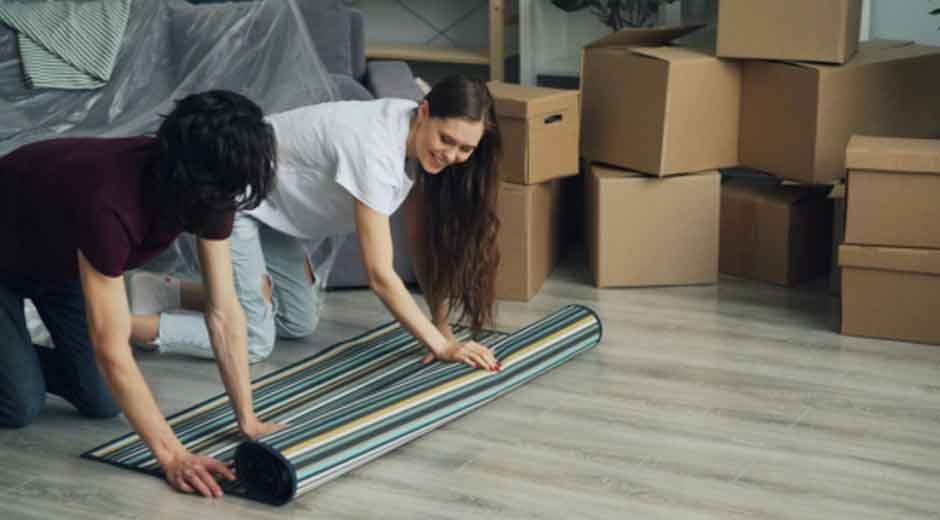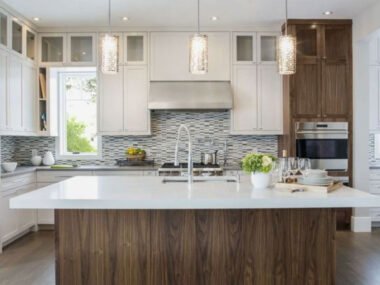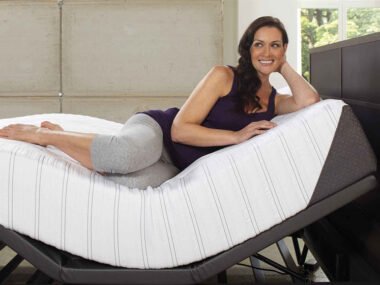Choosing flooring is one of the most important design decisions you can make for your home. The right flooring adds beauty, comfort, and personality to your space. It creates the foundation for your home’s entire aesthetic. Every room in your home needs a floor that looks great and fits the way you live.
Some floors are warm and cozy. Others are sleek and modern. The challenge is figuring out which one matches your home’s style and your personal needs. With so many choices like wood, tile, carpet, and laminate, it can be overwhelming to decide.
This guide will help you understand what to look for when choosing flooring for your home. These tips will make your selection process easier and ensure you find a floor that suits your style, lifestyle, and budget.
Understand Your Home’s Style
Before picking a flooring type, take time to study the overall style of your home. This is the first and most important step. Your floors should match or complement your home’s design. If your home has a modern feel with clean lines and minimal furniture, you may want to go with something simple and smooth like polished concrete or light oak. These choices create a sense of openness and calm.
If your home is more traditional, look for floors that bring warmth and richness. Darker wood tones or classic tile patterns work well here. For a rustic or farmhouse-style home, distressed wood and natural finishes will give your space that cozy, lived-in charm. A beach-inspired home benefits from whitewashed floors or pale wood tones that reflect sunlight and add to the airy feeling.
Once you know your home’s theme, it becomes easier to pick flooring that fits.
Think About How Each Room Functions
Different rooms have different needs. It’s important to consider the function of each space before making your final flooring decision.
For kitchens and bathrooms, flooring should be moisture-resistant because these areas see a lot of water. Tile is often the go-to choice for these rooms because it resists spills and is easy to clean. Stone flooring is another option that offers a natural look and can handle water well when properly sealed.
For bedrooms and living rooms, comfort becomes more important. These are rooms where you relax, watch TV, and spend time with family. Soft carpet, warm hardwood, or quiet laminate flooring are all good choices here. You want something that feels good underfoot and helps create a peaceful atmosphere.
In entryways and hallways, durability matters most. These spaces see lots of traffic and need a tough surface that won’t wear down quickly. A strong tile or a quality vinyl floor will last long and stand up to daily wear and tear.
Keep Your Color Palette in Mind
Your flooring color will have a big impact on your home’s look. It can make a space feel bigger, cozier, brighter, or more dramatic. That’s why it’s important to think about how the color of your floor fits into your home’s overall palette.
Light-colored floors tend to make a space feel larger and more open. They are a good choice for small rooms or homes with limited natural light. These floors reflect light and create a sense of space. Pale wood, cream tiles, and soft grays are all excellent light-floor choices.
On the other hand, dark floors add richness and depth. They work well in large rooms or open-concept layouts where you want to create a warm, grounded feel. Dark brown, deep gray, and black flooring all bring drama and elegance to a space.
If your furniture, wall paint, and décor follow a certain color scheme, your floor should tie everything together. Neutral floor colors like taupe, soft gray, or natural oak blend well with almost any interior design. This makes it easier to change your style over time without replacing the floor.
Explore the Impact of Texture
The texture of your floor matters just as much as its color. Texture not only affects how the floor looks but also how it feels and performs.
Smooth surfaces, like polished wood or glazed tile, create a clean, modern look. These textures work well in minimalist homes or elegant spaces. They are also easy to clean, which is a plus in areas that get dirty often.
Textured floors, like hand-scraped wood or natural stone, add character and personality. These floors often look more inviting and less formal. They are also more forgiving when it comes to scratches, dents, or dust, which can be helpful if you have kids or pets.
Texture also plays a role in safety. Smooth tile floors can become slippery when wet, which may not be ideal in a bathroom or kitchen. A slightly textured surface can help reduce the risk of slipping and improve traction.
Choose a Floor That Matches Your Lifestyle
Your daily routine, family setup, and personal habits should all influence your flooring choice. What works for one person might not be right for another.
If you have a busy household with children and pets, choose flooring that is tough, easy to clean, and able to handle spills and scratches. In this case, vinyl plank flooring could be the perfect choice. It is water-resistant, durable, and comes in many styles that resemble natural wood or tile. It’s also affordable and doesn’t require much maintenance.
If your home is quieter or more formal, you might prefer flooring that emphasizes beauty and comfort over toughness. In this situation, real hardwood or plush carpeting can offer a high-end look and cozy feel.
Think about how much time you’ll spend cleaning and maintaining your floors. Choosing flooring that suits your lifestyle will save you stress and money in the long run.
Make Comfort a Priority in Key Areas
Some floors are beautiful but hard and cold. If comfort matters to you, this is something to think about, especially in rooms where you spend a lot of time standing or walking.
Carpet is one of the most comfortable flooring types. It adds softness, warmth, and noise reduction. This makes it a great choice for bedrooms, nurseries, or home offices.
Cork flooring is also gentle underfoot and provides a cushion-like feel. It’s a good option for kitchens, where you may spend a lot of time cooking and standing. Engineered wood and some laminate floors also have a little give, which makes them more comfortable than stone or tile.
Even if you choose a hard surface like tile, you can still add comfort with area rugs. Rugs not only soften the floor but also add style and color to the room.
Think About Cleaning and Maintenance
The ease of cleaning and maintaining your floor will affect how much you enjoy it. Some people enjoy spending time cleaning their homes, but many prefer low-maintenance options.
Tile and vinyl are very easy to clean. They resist stains, wipe down quickly, and don’t trap dust or pet hair. Laminate is also easy to maintain, although you’ll want to avoid standing water.
Wood floors need a bit more care. You’ll need to sweep or vacuum often and use special cleaners. Over time, real wood may also need to be refinished. Carpet requires vacuuming and, from time to time, deep cleaning to remove trapped dirt and allergens.
If you don’t want to spend much time on cleaning or upkeep, choose a flooring material that stays looking good with minimal effort.
Choose Flooring That Fits Your Budget
Flooring can be expensive, especially if you’re redoing more than one room. That’s why setting a budget before you begin shopping is essential. Once you know what you can afford, it becomes easier to narrow down your choices.
Laminate and vinyl offer stylish looks at lower prices. These are excellent for anyone who wants the appearance of wood or tile without the high cost. They are also DIY-friendly, which can save you money on installation.
Hardwood floors tend to be more expensive, but they also add value to your home. If you have the budget for it, they are a great long-term investment. Tile and natural stone can vary in cost depending on the type and quality, but they last for many years when installed and sealed properly.
Don’t forget to factor in installation costs, tools, and materials like underlayment or adhesive. If you are hiring a professional, always ask for estimates and compare prices.
Look for Long-Term Appeal
It is tempting to follow trends, but it’s smarter to choose flooring that will still look good in ten or twenty years. Flooring is not something you want to change often, so think long-term.
Neutral colors, timeless materials, and classic patterns are your best bet. These choices give you more flexibility to change your home’s furniture and décor over time without replacing the floors.
If you love bold styles, you can always bring them in through rugs, pillows, curtains, or wall paint. These items are easier and cheaper to replace than flooring.
Investing in quality materials also helps with long-term appeal. A floor that stays strong and looks good for many years is worth more than one that needs to be repaired or replaced after just a few.
Try Samples in Your Own Space
One of the best ways to make sure you’re choosing the right flooring is to test samples in your home. Showroom lights and pictures online can be misleading. What looks great under bright lights might not look the same in your living room.
Get small samples of your top flooring choices. Place them in the rooms you’re renovating. Look at them during the day and at night. See how they match your walls, furniture, and natural light. Walk on them. Check how they feel under your feet.
This simple step can help you avoid costly mistakes. Seeing the flooring in your actual space gives you a clearer idea of how it will look and feel once installed.
Coordinate with Existing Features
Take a good look at the permanent features of your home such as cabinets, countertops, fireplaces, or exposed beams. Your floor should complement these features rather than compete with them.
For example, if you have dark kitchen cabinets, a lighter floor can create a pleasing contrast. If your stone fireplace is a standout feature, choose a floor that echoes its natural tones. Coordinating your flooring with these elements will make your design feel intentional and balanced.
Think About Acoustics
The type of flooring you choose can affect how sound moves through your home. Hard floors like tile, wood, and laminate tend to reflect sound, which can make a room feel louder. This might be a concern if you live in a multi-level home, a condo, or have young children who play a lot.
If noise control is a priority, consider carpet or add rugs to absorb sound. Cork flooring is another good option because it naturally dampens noise. Thinking about acoustics early can help create a more peaceful environment.
Don’t Overlook Sustainability
More homeowners today are thinking about how their choices affect the environment. If this is important to you, consider eco-friendly flooring options like bamboo, cork, reclaimed wood, or floors made from recycled materials.
Also, check the manufacturer’s sustainability practices. Look for certifications that show the product meets environmental standards. Choosing a sustainable floor means you’re making a positive impact while still getting a beautiful design.
All About the Right Flooring for Your Home’s Aesthetic
Choosing the right flooring takes time, but it’s worth the effort. Your floors are a major part of your home’s design and everyday life. The right choice adds beauty, comfort, and value to your space.
By thinking about your home’s style, the purpose of each room, your color palette, and your personal lifestyle, you can make a decision that fits both your taste and needs. Pay attention to texture, comfort, maintenance, and long-term value. Test samples and set a budget before making your final choice.
Looking for more tips and ideas? We’ve got you covered. Check out some of our other posts now.










